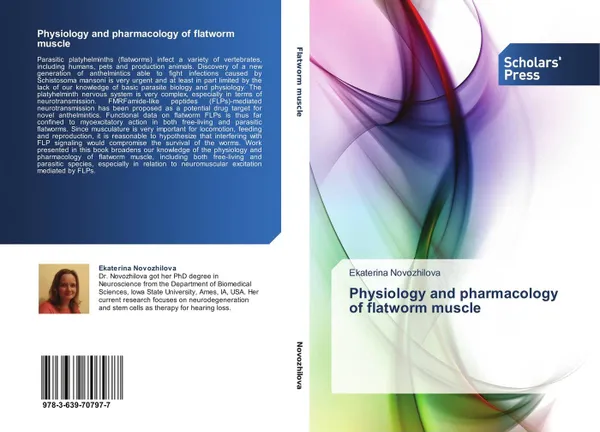Physiology and pharmacology of flatworm muscle
Автор: Ekaterina Novozhilova
2014
168 страниц
Категория: Литература на иностранных языках
Язык: Английский
Тираж: 500
🔖 Parasitic platyhelminths (flatworms) infect a variety of vertebrates, including humans, pets and production animals. Discovery of a new generation of anthelmintics able to fight infections caused by Schistosoma mansoni is very urgent and at least in part limited by the lack of our knowledge of basic parasite biology and physiology. The platyhelminth nervous system is very complex, especially in terms of neurotransmission. FMRFamide-like peptides (FLPs)-mediated neurotransmission has been proposed as a potential drug target for novel anthelmintics. Functional data on flatworm FLPs is thus far confined to myoexcitatory action in both free-living and parasitic flatworms. Since musculature is very important for locomotion, feeding and reproduction, it is reasonable to hypothesize that interfering with FLP signaling would compromise the survival of the worms. Work presented in this book broadens our knowledge of the physiology and pharmacology of flatworm muscle, including both free-living and parasitic species, especially in relation to neuromuscular excitation mediated by FLPs.
Мнения
